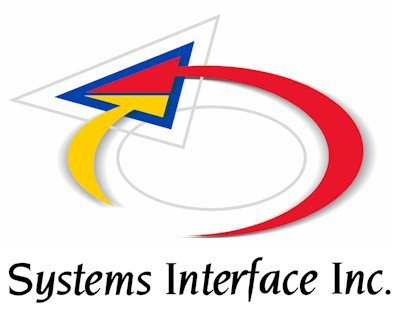
For 40 years, Systems Interface has been an industrial control systems integrator that provides leaders in many industries with advanced, practical automation solutions.
- Creating a modernized version of a telescope that matches the performance of previous antennas with now-obsolete hardware
- Developing a sophisticated motion control system that enabled the telescope to track precise movements of celestial objects and respond quickly and accurately to slow signals
- Timely project delivery
- Achieved precise control
- Facilitated additional publications for the University due to expanded capabilities and deepened aerospace research
How often do you think about black holes? Stars? The mysteries of deep space? If you’re a researcher at a major research University in South Korea, it’s a lot. Researching celestial bodies requires high-performing instruments. That’s why, when the University needed to construct a deep space antenna, they turned to Systems Interface.
Systems Interface, a Gold-level System Integrator member of the Rockwell Automation PartnerNetwork™, embarked on the pioneering project with the University.
The project involved the construction of a fourth deep space antenna, following the success of three previous installations between 2007 and 2009. The University wanted another antenna that could help researchers further explore space.
Challenge
This project was unique from the start. The University wanted a fourth antenna that could perform just as well as the first three. Given that the previous antennas were commissioned years ago, building a new one required updated equipment with high levels of customization.
“I don’t think there’s any corporation that could do what the University wanted—to replicate the existing antennas,” said Curits Plett, Vice President of Engineering at Systems Interface.
“The customer wanted a system that matched the previous systems, but they wanted it updated with current servo drive offerings while keeping the overriding motion control interface the same. An OEM might refuse to deviate from their standard offering. System Integrators like Systems Interface, however, can bring tremendous value by being able to develop custom solutions for their customers.”
Obsolete Equipment
The existing deep space antennas utilized outdated Kinetix 7000 drives and legacy servo motion technology, both of which were becoming obsolete. Systems Interface needed to use modern hardware on the new antenna while ensuring that its performance of the new antenna matched that of the previous antennas.
Precise Control
Operating at very slow velocities, the antenna required precise tracking of celestial targets such as stars and black holes. Systems Interface had to develop a motion control system capable of tracking these targets accurately while maintaining responsiveness to slow signals from outer space.
“It wasn’t just simple motion control,” said Plett. “It was motion control to a highly calculated and precise position. A higher-level motion control system takes 29-bit encoders off the structure. It’s closing position loops based on those encoders, doing celestial calculations of where it thinks an object in the sky should be, pointing the antenna at the object, using the frequency of the antenna to fine tune the position, and then track it across the sky overnight.”
Supply Chain Delays
Commencing in 2021, the project encountered COVID 19-related supply chain disruptions, posing significant challenges in procuring essential hardware components. Planning and scheduling became critical to mitigate the risk of delays and financial setbacks associated with incorrect or unavailable parts.
Solution
To address these challenges, Systems Interface leveraged a combination of cutting-edge hardware, their own domain expertise, and the Rockwell Automation PartnerNetwork.
Designing for Precise Control
The solution included state-of-the-art technology, featuring the ControlLogix® 5580 Controller and Kinetix® 5700 Servo Drive control system, which orchestrated precise movements with its four Kinetix MPL low-inertia motors. The solution also used the Allen Bradley® PanelView™ operator interface to enable visualization and control, as well as various Rockwell Automation components. In total, the antenna was built with a single manufacturer solution that enables optimal performance and support rather than a control system cobbled together from many manufacturers.
Combining Expertise Across the Ecosystem
The successful completion of the deep space antenna would not have been possible without the rich ecosystem of the Rockwell Automation PartnerNetwork. Strategic partnerships with distributors like North Coast and Rockwell Automation technology consultants expedited the selection and procurement of essential components.
For example, a Rockwell Automation technology consultant helped Systems Interface get the bill of materials (BOM) right. The consultant "helped us go through the BOMs and come up with new ones to accomplish all of this…and helped us accelerate getting tech support in the event of technical issues on site,” said Plett.
Additionally, the profound domain expertise of the Systems Interface team enabled them to devise innovative solutions, such as working with technology partner Profibus to transition from ControlNet to Profibus communication for enhanced reliability and supportability.
Result
On-Time Completion and Exceeding Expectations
In late 2023, the construction of the 21-meter antenna was successfully concluded, bolstered by Rockwell Automation technology, including four servo motors capable of reaching an impressive maximum speed of 3 degrees per second. This milestone allowed the antenna to capture its inaugural astrological images, commonly referred to as "First Light."
With the completion of this project, the University achieved its critical objective of deploying a fully operational antenna within their specified timeline. The antenna's performance not only met but exceeded expectations, showcasing seamless functionality without requiring any additional support during startup, thanks to the rigorous validation conducted by Systems Interface prior to its deployment in South Korea.
Transformative Impact for Aerospace Research and University
The expertise of Systems Interface and collaboration with Rockwell Automation ensured the seamless operation of the antenna, with minimal issues reported post-installation. This project is momentous in many ways. The completion of the fourth antenna has contributed to a deeper understanding of the galaxy for students and professionals, led to many astronomy publications for the University, and signifies a giant leap forward in technological innovation.
Published May 9, 2024


